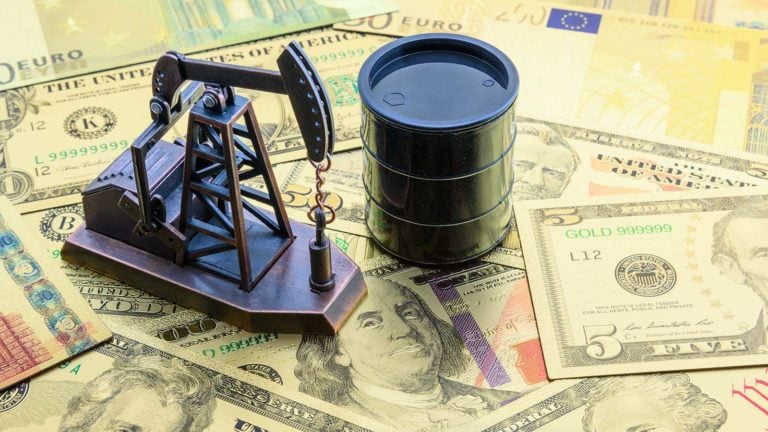Dave Gilbert here, Editor of Smart Money.
Unless you’re one of the relatively few folks who drive an electric vehicle, you’ve surely noticed how much more expensive gasoline is these days.
Earlier this month, the average price for regular unleaded hit $4.331 per gallon according to AAA. That’s the highest ever.
Prices have come down some, but at $4.225 today, gas is still 47% higher than just one year ago.
This has a profound ripple effect, as fuel is required to make and transport pretty much everything.
We know the reason why. Official and unofficial sanctions on Russia after its invasion of Ukraine have crimped the supply of oil coming out of the critical energy country. That’s why President Biden today said the U.S. would release one million barrels of oil per day to try to lower gas prices and fight inflation.
That’s a big deal. What comes next could be an even bigger deal…
Oil’s Not Dead
In the wake of the invasion, hundreds of companies have cut ties with Russia. McDonald’s (NYSE:MCD). Netflix (NASDAQ:NFLX). Starbucks (NASDAQ:SBUX). Coca-Cola (NYSE:KO). Apple (NASDAQ:AAPL). And more.
The impact is meaningful, but it doesn’t necessarily send ripple effects through the global economy. Talking about Netflix’s withdrawal from Russia, InvestorPlace CEO Brian Hunt said: “Some people in Moscow won’t get to watch Squid Game. Big deal.”
Conversely Brian also said that another group of other companies leaving Russia is a very real, very big deal… and that’s Big Oil.
Companies like Exxon Mobil (NYSE:XOM
), BP (NYSE:BP), Shell (NYSE:SHEL), Schlumberger (NYSE:SLB), Halliburton (NYSE:HAL), and Baker Hughes (NASDAQ:BKR).
Because so many companies are leaving Russia, it’s easy to miss how truly remarkable this breakup is. Big Oil companies are leaving behind years, if not decades, of work – and investments in the billions of dollars.
Since the fall of the Soviet Union in the early 1990s, Russia’s rich supply of natural resources has made it a magnet for energy companies. Russia is the world’s third-largest oil producer, behind the United States and Saudi Arabia. It is the top oil exporter in the world, and second only to the U.S. for natural gas production.
Oil is essential to the global economy, not only for vehicles and transportation, but also for heating, producing electricity, and in various manufacturing processes, including the making of plastics.
Global demand for oil has been on the rise, and supply disruptions now threaten to drive prices even higher for an extended period of time.
Here’s what Eric Fry recently wrote to his Investment Report subscribers:
“The U.S. oil and gas sector has embarked on a new phase of prosperity; this notoriously volatile, boom-bust industry is booming once again.
Investors have acknowledged this new trend by bidding the shares of most oil and gas stocks to multi-year highs.
The SPDR Oil & Gas Exploration and Production ETF (NYSEARCA:XOP), for example, has soared 66% over the last 12 months, while many individual names in the energy sector have doubled or tripled during the last year.
Despite these big moves, the new bull market in energy stock is probably still in its infancy. If $100+ oil becomes the new normal, rather than a temporary fluke, oil companies will begin minting money.
At the same time, investors will become increasingly convinced that the industry’s robust profit growth can continue to for a good, long while.
These positive influences could power most energy stocks to much higher highs over the months ahead.
There may be a perception that renewable energy sources and electric vehicles are ready to pick up the slack, but that’s not entirely true. They have come a long way, for sure, but not far enough to relegate oil to “optional” status.
In fact, the U.S. Energy Information Agency projects petroleum and natural gas will be the most-used fuels in the United States through 2050 – that’s another three decades.
One irony is that oil is still needed to produce these resources that are supposed to free us from oil. Eric spotted this a couple of years ago, which was big reason he foresaw another boom in oil prices.
… renewable energy is not oil-free energy.
Producing an EV [electric vehicle], for example, requires about twice as much energy as producing an internal combustion engine vehicle. This differential results mostly from battery production, which uses a lot of energy to extract and refine metals like copper and nickel.
A green energy fairy doesn’t simply drop these metals on the doorstep of EV manufacturers every night.
Instead, great big gas-guzzling and/or coal-fired equipment like earth-movers, conveyors, processing plants, container ships, port-cranes, alloy fabricators, and big-rig trucks combine to do the dirty job of converting hunks of ore into battery-grade alloys… and transporting these essential metals from their source to their end-users.
With few exceptions, every step of the process consumes some form of fossil fuel.
In other words, the death of oil is greatly exaggerated… and I expect its price to deliver some upside surprises over the next year or two.”
We’ve seen the impact of Russia’s invasion of Ukraine on oil prices. They spiked above $130 per barrel for the first time in 13 years earlier this month.
The situation will likely remain uncertain in the short term, and looking further down the road, Big Oil’s exit from Russia may well reshape the global energy landscape.
It’s a potentially huge impact of the war that investors and the world cannot ignore.


